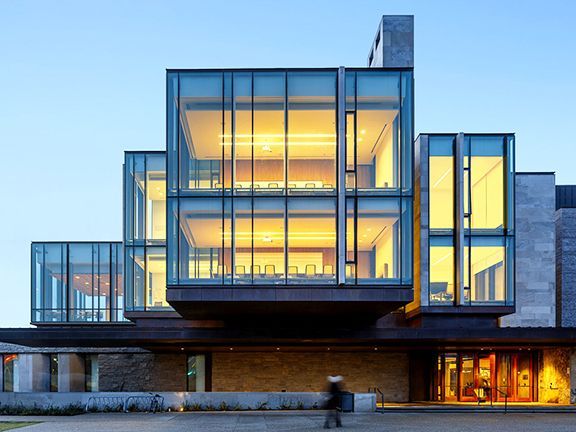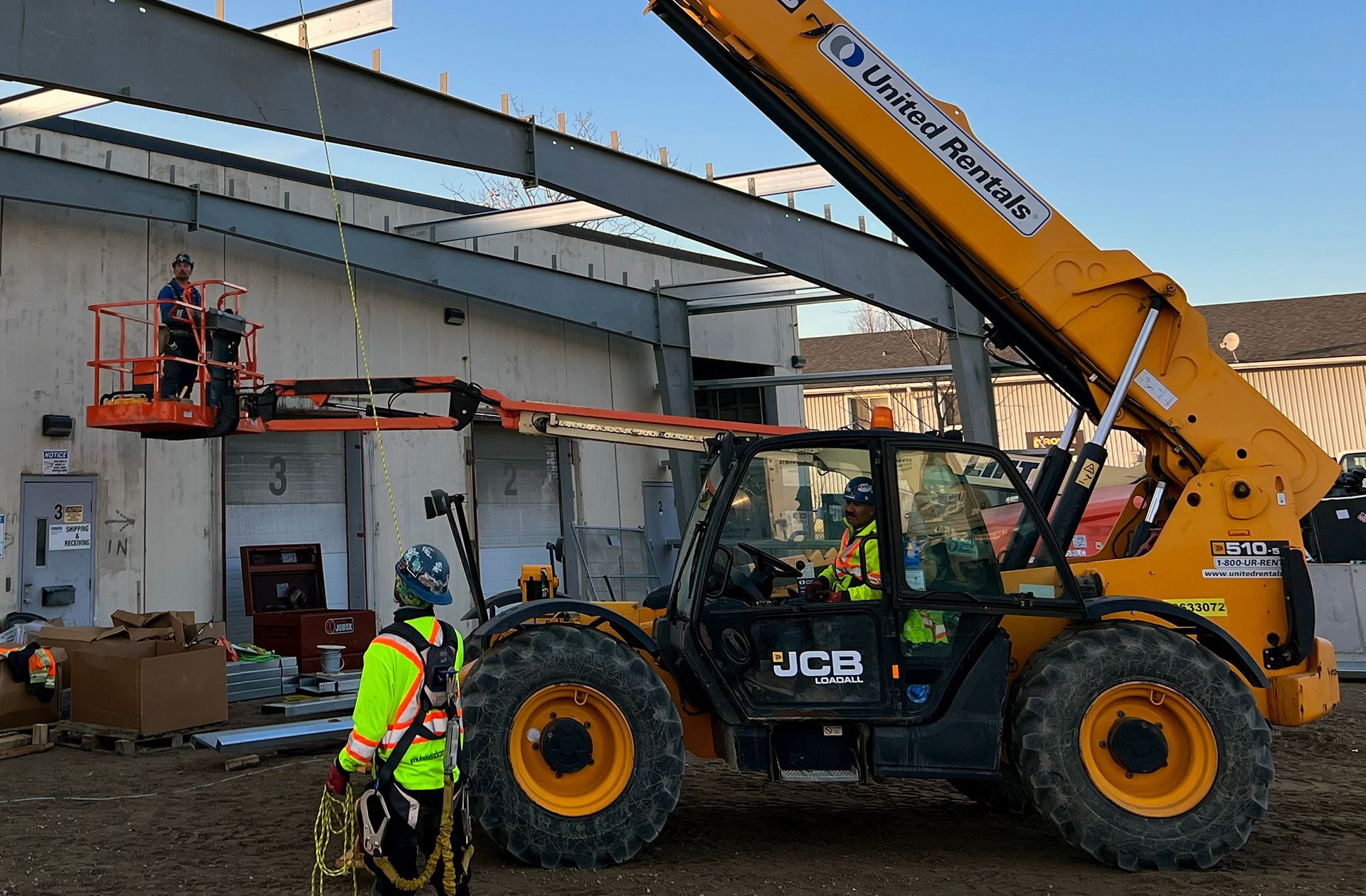Steel is Ideally Suited for Creative Architecture and Façades
Frank Melo • November 21, 2024
Commercial and industrial metal structures must be built to serve three main functions: they suit the needs of the business, look good and be built to last. Pre-engineered steel building systems enable architects to provide their clients with optimal working conditions that are durable yet offer design and engineering freedom so their creativity can go wild.
Think of pre-engineered building systems
as the ultimate form of Lego. Individual components are manufactured in bulk and can be ordered in any combination to create virtually any architectural vision.
And thanks to its strength, flexibility and appealing look, steel is a remarkable building material that can support any design feature. There’s no limit to what can be achieved. Consider huge, open central spaces, dramatic cantilevers, shapely exteriors, and curved forms
– only steel's exceptional high strength-to-weight ratio can realize these concepts. When used in compact cross-sections, steel weighs about 60 percent less than concrete and is eight times stronger in tension and shear strength. Unlike brick, mortar, wood, and other materials with structural limitations, steel offers unprecedented design potential.
When architects aim to impress clients with modern, sophisticated designs that captivate both the public and critics, pre-engineering systems are the ultimate solution to expressing your vision.
Three Reasons Why Creative Architects Demand Steel
A quick overview of why architects will inevitably need pre-engineered building systems:
- Unparalleled design freedom
- Long-lasting aesthetic appearance with minimal maintenance
- Precise engineering using laser-cut metal for superior weather protection
1. Design Freedom
Steel is ideal for framing, roofing, wall and façade systems requiring high load-bearing capacity and large spans due to its significant strength. Buildings can offer large open areas with bridging and massive windows. Its reliable tension and compression characteristics allow for versatile designs, including curved or irregular shapes. Designers can push the boundaries of imagination to create extraordinary architectural feats.
Metal design offers architects a canvas of design possibilities:
- Smooth, contemporary metal paneling
- Intricate perforated metal patterns
- Resistance to harsh weather conditions
2. Maintains Its Look
Modern architecture demands more than just structural integrity. Steel building systems excel in maintaining their aesthetic appeal over decades with minimal maintenance. Metal façades provide architects with an extensive range of design possibilities, from sleek, smooth metal paneling to intricate perforated patterns. These façades offer significant durability and longevity benefits.
Despite being lightweight, metal façades can:
- Withstand harsh weather conditions
- Resist corrosion and fading
- Maintain their appearance over time
- Reduce the need for frequent repairs or replacements
3. Precision and Fit
Pre-engineering’s use of off-site manufacturing means each component can be cut and formed to exact measurements. System components can be assembled with a minimum of holes or bolts so once the framing is in place, roofing, cladding and walls systems can create a protective shell external threats like water and excessive heat or cold.
Digital fabrication using computer-aided design (CAD) allows for creating complex geometric patterns with exceptional accuracy, ensuring perfect fits and optimal performance. Wall systems and cladding serves are fitted tightly together to outperforming in several critical functions:
- Controlling external weather intrusion
- Allowing internal water vapor escape
- Contributing to acoustic and thermal insulation
- Enhancing fire resistance
Steel is More Than a Material, It’s a Canvas
Pre-engineered steel building systems offer architects unprecedented creative freedom, durability and performance, making them an ideal choice for modern commercial and industrial building design.
For forward-thinking architects and developers, steel is more than a building material – it's a canvas of possibilities. It offers an unparalleled combination of strength, flexibility, aesthetic potential and environmental responsibility. From the sweeping curves of modern museums to the precise geometries of high-tech industrial facilities, steel continues to push the boundaries of what's possible in architectural design.
As construction technologies evolve and environmental considerations become increasingly critical, steel stands ready to meet the challenges of 21st-century architecture. It's not just a material; it's a solution – adaptable, sustainable, and limited only by the imagination of those who design with it.
Contact our leadership team
or speak with us directly at (833) 322-2722.
You're also welcome to email us at info@DoubleBlackConstruction.com so we can provide you with a free quote and consulting.
Submit your drawings and get a quote online!
Submit your drawings and get a quote online!
About the author:
Frank Melo
has a construction civil engineering technology and business background with over 25 years of experience as a business owner and contractor. He was born and educated in London, Ontario and now divides his time between projects primarily in Ontario and British Columbia. He can be contacted at Double Black Construction at (778) 951-4766
or by email at frank@doubleblackconstruction.com
or through LinkedIn.






